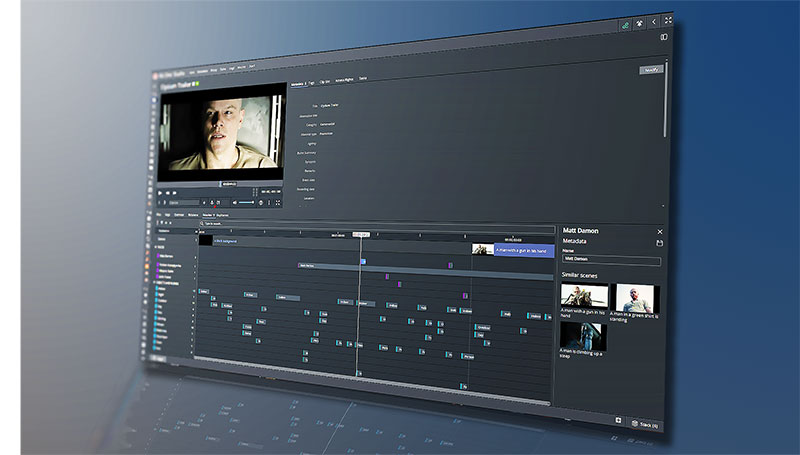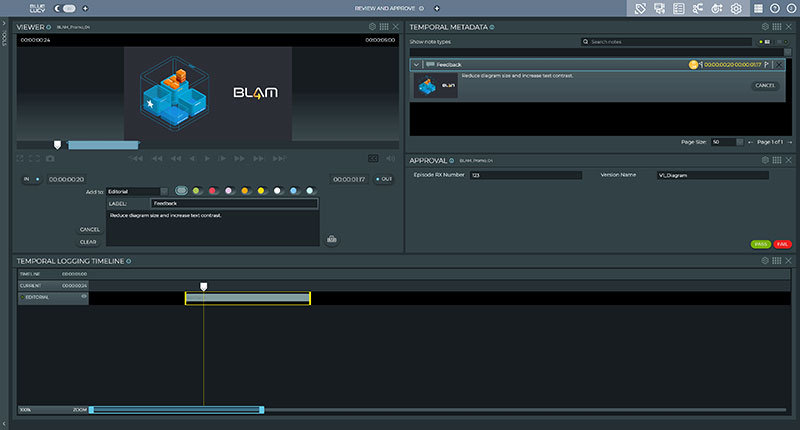Hammerspace SVP of Global Marketing Molly Presley talks about the impacts and changing demands of data science – AI, machine learning and data processing – on the data industry.

Hammerspace SVP of Global Marketing Molly Presley talks here about the trends she believes will impact the data industry the most in the coming year. She emphasises the changing demands of data science – AI, machine learning and data processing – and how organisations will handle them within dynamic, distributed architectures. She also sees 2025 as a transformative year, marked by ongoing developments in efficiency and scalability.
GPU-Centric Data Orchestration
She noted that one of the challenges in AI and machine learning (ML) architectures continues to be the efficient movement of data to and between GPUs, particularly remote GPUs. “GPU access is becoming a critical architectural concern as companies scale their AI/ML workloads across distributed systems. Traditional data orchestration solutions are now proving inadequate for the demands of GPU-accelerated computing,” she said.
“Beyond managing data flow, the bottleneck is specifically about optimizing data transport to GPUs, often to remote locations, to support high-performance computing (HPC) and advanced AI models. As a result, the industry will see a surge in GPU-centric data orchestration innovation. The new systems will minimize latency, maximize bandwidth and ensure that data can move directly across local and remote GPUs.”
As companies rethink how they handle data pipelines in GPU-heavy architectures, Molly expects to see greater investment in technologies that ease data movement, make efficient use of hardware, and support scalable AI models that can take advantage of distributed and GPU-driven environments.
GPUs and AI – Beyond Square One
Interestingly, Molly observed that, on the brink of 2025, the AI industry now faces a huge demand for GPUs worldwide – combined with a dilemma. Though companies may have invested heavily in GPU-based infrastructure, many are unsure of the next step to apply these chips to AI workloads, and are instead redirecting them toward non-AI applications. Consequently, the expected AI-driven boom remains slower than anticipated.
“We will continue to see companies be more selective about GPU allocations and focus on areas like data analytics and cloud computing enhancements – where the impact of AI is already established – rather than emerging AI initiatives,” said Molly. “As developers also become more resource-conscious, they may choose to optimise algorithms for available hardware, using CPU-bound AI and adopting hybrid approaches. 2025 may be a year for companies to adapt to both the technical and logistical challenges of realizing AI's potential.”

Unifying Data Silos
A further architectural concern for data engineers and AI architects is the need to break down data silos. “The ability to aggregate and unify disparate data sets across organizations will be essential for advanced analytics, AI and machine learning initiatives. Modern AI systems demand holistic insights and decision-making and, especially as the volume and diversity of data sources continue to grow, overcoming these silos will be a critical step,” Molly said.
The focus will shift from the infrastructure toward the integration of data across various platforms, teams and geographies. The goal will be to create an ecosystem where data can be accessed, shared and acted on across all domains. “Expect to see new tools and frameworks aimed at simplifying data integration and fostering greater collaboration across traditionally siloed environments,” she remarked.
Aligning HPC with Enterprise Standards
She also expects that by 2025, many more medium-to-large enterprises will choose to integrate HPC for unstructured data processing. Using AI and data analytics to gain a competitive edge requires processing vast amounts of unstructured data like text, images and video. However, adopting HPC at scale means that organizations must reconcile specialised HPC processing with enterprise security, compliance and operational standards.
Molly commented that pulling these two sides of HPC adoption together has long been considered a stumbling block, but said, “The solution here lies in developing HPC systems expressly to work within enterprise-standard environments, and to maintain consistency with standard clients, operating systems, networks and security frameworks, allowing direct integration. This convergence will finally enable organizations to put HPC to work for large-scale unstructured data processing without compromising enterprise standards.”
Bringing Global Namespaces Up to Date
Molly considers that the way companies manage global namespaces will influence data-handling strategies across the industry this year. For instance, not all global namespaces will be created equal. Some will have only read-only capabilities, while others will support active read-write functionality.
“Having a single view of your data sounds efficient, but the concept is most valuable when users can act on that data without restriction,” she said. “If teams can't collaborate in real-time on a single dataset without creating multiple copies that require complex merging, it defeats the purpose of simplified data management.”
Multiple users creating their own versions of the same dataset for individual read-write tasks can introduce inefficiency, silos and data inconsistencies. As companies begin using global namespaces to build more collaborative, efficient data environments, they will need to support not only comprehensive views, but also active read-write capabilities. In this way, businesses can avoid data fragmentation while unifying collaboration, making their data infrastructure elegant and functional for modern workloads.
Power Efficiency in 2025
Molly’s final prediction for 2025 returns to a familiar topic of universal concern – power efficiency. She believes organisations’ decisions will be driven by financial and environmental imperatives as well as the desire to make more compute power available for data analytics and AI – specifically, intensive GPU workloads.
Companies will place greater emphasis on optimizing energy use. Molly said, “This shift goes beyond the surface-level appeal of sustainability. Power efficiency will become a strategic advantage, enabling businesses to save on operational costs while expanding their computational capabilities. In this landscape, energy-efficient data storage and management infrastructure won't just make companies look good—it will become a critical enabler for growth and innovation.” hammerspace.com




















